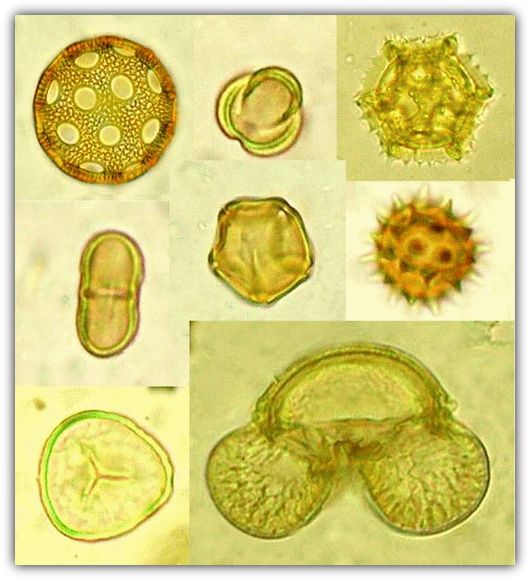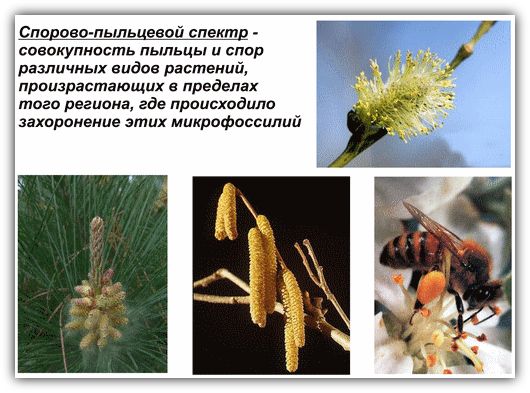Palynology
A number of archaeological objects located on the Abrau peninsula were explored by palynological method.

Palynological (spores and pollen) consists of analysis and determining under the microscope and counting the fossil pollen and spores extracted from the corresponding fraction of the solid. Palynological analysis is a subtle indicator of changes in vegetation and thereby is essential for the reconstruction of paleolandscapes and climate.
What is this analysis based on?
1. Higher plants produce a huge amount of pollen or spores, which, falling on the surface of land or water, are buried and transformed into mineral (fossil) state, becoming a component of sediments and forming spore-pollen spectrums. The spore-pollen spectrum is a collection of pollen and spores of various species of the plants that grew in the region where the burial of these microfossils had taken place.
2. Spores and pollen of different species and genera have characteristic morphological features, allowing to recognize and identify pollen grains and spores to a family, genus, species sometimes. It takes into account certain diagnostic features. They include: 1) form; 2) size of the grains; 3) thickness of the shell and the number of layers; 4) structure of the outer shell; 5) presence of cracks, fissures, pores, their structure.
3. The outer shells of pollen and spores of the most of higher plants consist of hardly breakable ang corklike substance. They are resistant to chemical attack, almost non-destroyed, poorly mineralized and therefore extremely long preserved as fossils.

4. Higher plants produce a huge number of pollen grains and spores. The loads of pollen and spores in the tested samples allow statistically to process data of the palynological analysis and obtain not only qualitative but also quantitative characteristics.
Before exploring the samples under the microscope, they conduct laboratory processing. Its purpose is to identify as many as possible pollen and spores, and the separation from their host rocks.
Determination of pollen and spores and counting pollen grains and spores is carried in the light microscope at a magnification in ×400
(Elena A. Spiridonova, A. Aleshinskaya; Maria D. Kochanova).
